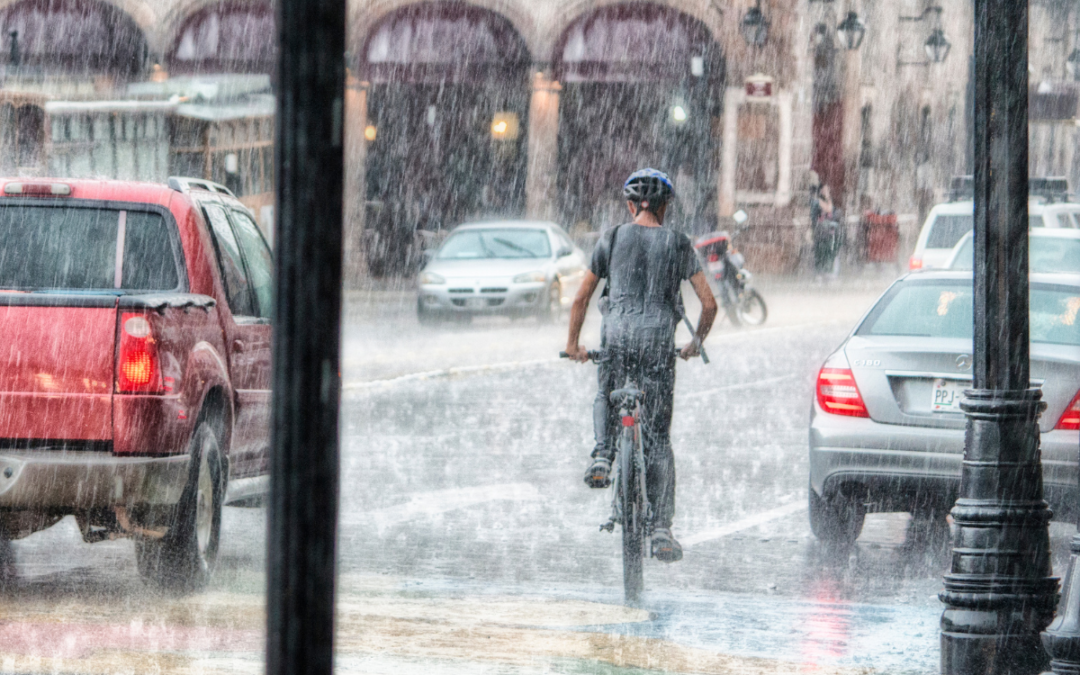Sharing the Road in Bad Weather
Adverse weather conditions such as rain, snow, fog, and ice significantly impact road safety, demanding heightened awareness and caution from all road users. Whether you’re behind the wheel, on a bicycle, or on foot, understanding how to adjust your behavior and expectations during these challenging times is crucial for ensuring everyone’s safety. Here’s a detailed guide on safe road sharing practices during bad weather, offering tailored advice for drivers, cyclists, and pedestrians alike.
For Drivers:
1. Slow Down: Lower your speed to account for reduced visibility and increased stopping distances. Fast driving in bad weather is a recipe for disaster, as it significantly increases the risk of accidents.
2. Increase Following Distance: Keep a safe distance from the vehicle ahead. This distance should be increased further in adverse weather conditions to provide ample time for safe stopping.
3. Use Headlights: Always use your headlights in poor weather, even during the day, to improve your visibility to others and to ensure you can see the road ahead clearly.
4. Be Vigilant for Cyclists and Pedestrians: Bad weather can make it harder to see other road users. Pay extra attention to crosswalks, bike lanes, and intersections where cyclists and pedestrians are likely to be.
5. Avoid Sudden Stops and Turns: Sudden maneuvers can lead to skids, especially on wet or icy roads. Gentle and gradual movements are safer and give others time to react.
For Cyclists:
1. Make Yourself Visible: Wear bright, reflective clothing and ensure your bike is equipped with lights and reflectors. Visibility is your best defense against being overlooked by drivers in poor weather.
2. Use Bike Lanes When Available: Stick to bike lanes whenever possible. If you must share the road with vehicles, keep to the right and follow the flow of traffic, maintaining a safe distance from parked cars.
3. Reduce Speed: Just as drivers need to slow down, cyclists should also reduce their speed to maintain control on slippery surfaces and allow for longer stopping distances.
4. Signal Your Intentions Clearly: Use hand signals to indicate turns or stops well in advance. In bad weather, make sure your actions are predictable to drivers and pedestrians.
5. Avoid Risky Surfaces: Wet leaves, puddles, and metal surfaces become extremely slippery in bad weather. Exercise caution and avoid these hazards whenever possible.
For Pedestrians:
1. Be Visible: Wear light-colored or reflective clothing, and carry a flashlight in low-light conditions. Making eye contact with drivers at crossings can also help ensure they’ve seen you.
2. Stay on Sidewalks: Avoid walking on the road as much as possible. If you must walk on a road without sidewalks, face the oncoming traffic and keep as far to the side as possible.
3. Cross at Designated Points: Always cross roads at marked crosswalks or intersections where drivers expect pedestrian traffic. Make sure vehicles have stopped before you cross, even if you have the right of way.
4. Pay Attention: Avoid distractions like using your phone or listening to loud music. Your ability to hear approaching vehicles or bicycles can be crucial.
Sharing the Road
Sharing the road safely during bad weather requires cooperation, patience, and adaptability from all road users. By following these guidelines and adjusting your behavior according to the conditions, we can all contribute to a safer environment on our roads, regardless of the weather. Remember, safety is a shared responsibility, and taking these precautions can help protect not just yourself but everyone who shares the road with you.
Drive with Confidence!
Keep up with all the latest driving news. Expolre our blog packed with essential tips and expert advice on all things related to DRIVING!




